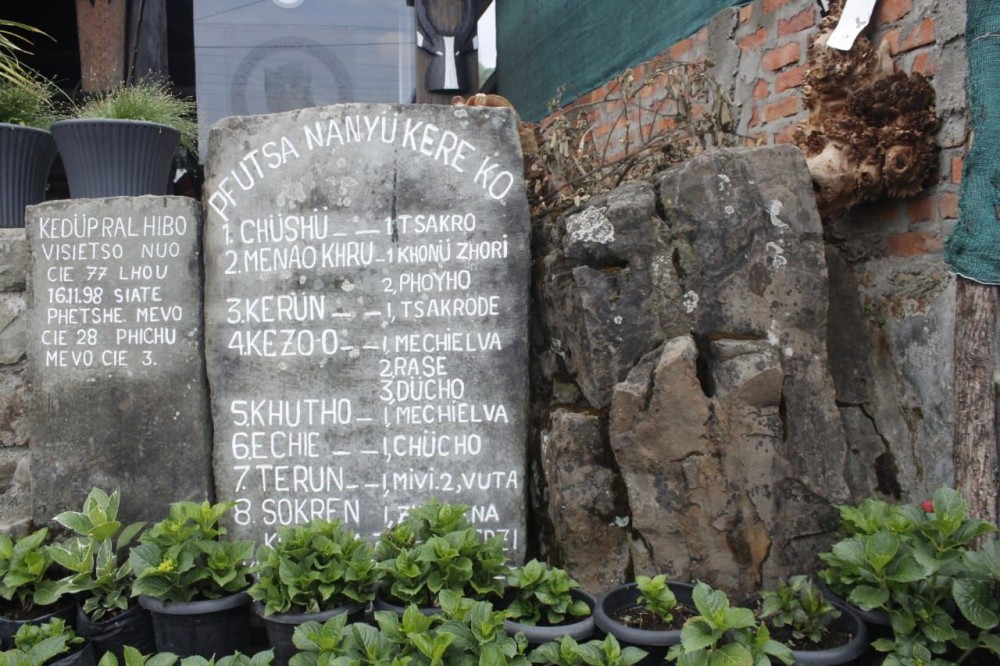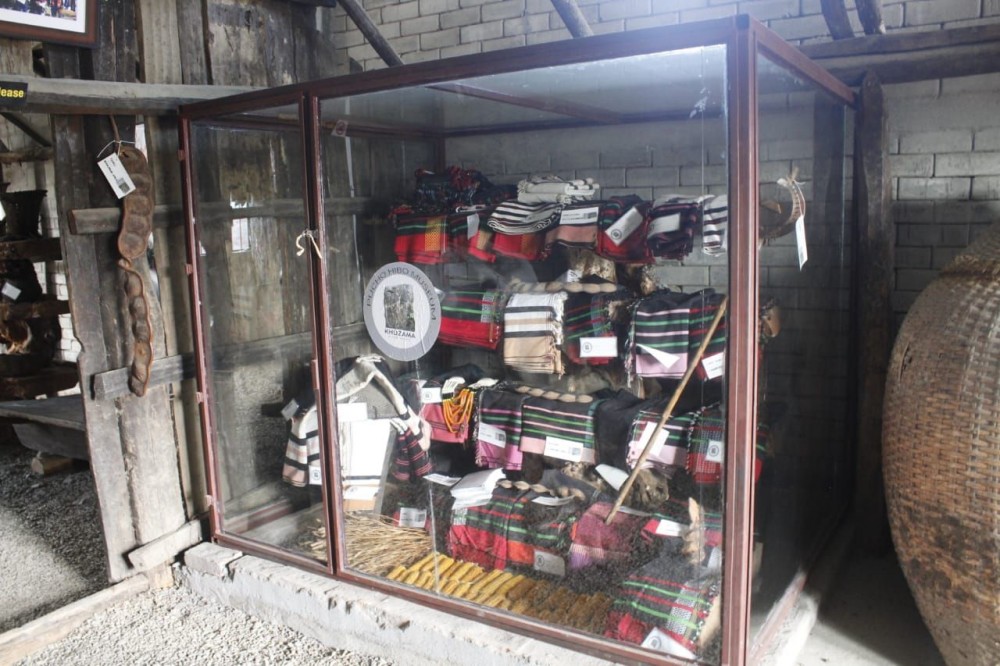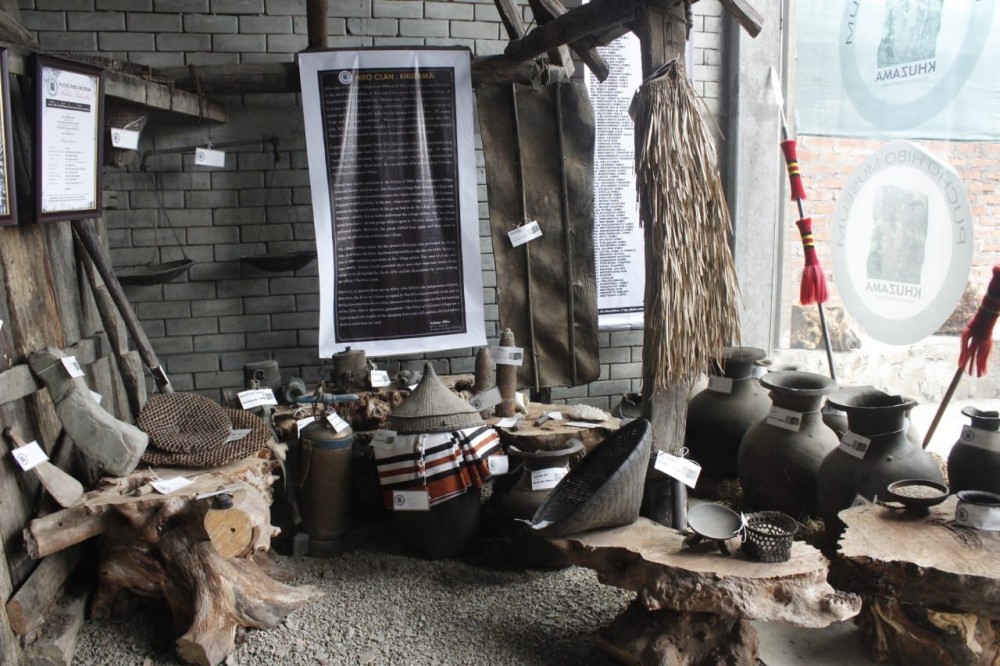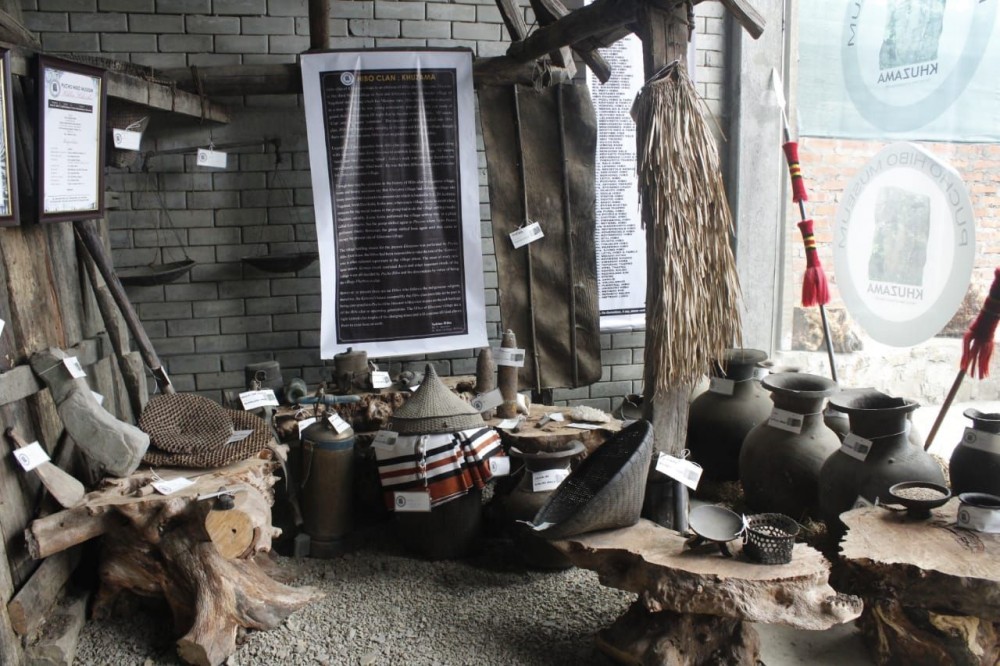Some of the artefacts on display at the Pucho-Hibo Museum in Khuzama village. (Morung Photo)





.jpg)
Ketholeno Neihu
Kohima | May 9
“It is assumed and also carved on a stone that the Kemevo (first settler) of Khuzama Village had come to the present site in the year 1861 after shifting from three other locations, and performed village settling rituals,” a village elder narrated.
The name of their first settler was Pucho Hibo. Over one and a half century later, the house that he first came to occupy and the ritual stones are now preserved and converted into a museum christened as ‘Pucho-Hibo Museum.’
Located in the heart of Khuzama, a Southern Angami village which shares the inter-state border with Manipur, the Museum structure—built with the aesthetics, craftsmanship and style of the past, stands over the old house and measures about 54 ft in length and 26 ft width.
Mehozol Hibo, an elder narrated the records of Pucho’s descendants on a warm Sunday afternoon, as other village folks returned from church service and elders basked in the sunlight outside the museum.
Reading from a note that he had written a month back during the museum inauguration ceremony, Mehozol said that “After Puda’s demise on April 24, 2010 there has been no village Kemevo,” implying that the village no longer has an indigenous religion elder after Puda. Apparently, most of the villagers now are Christian converts and only two people who still practice indigenous religion have relocated out of the village.
The people of Khuzama, in spite of the changing times, have been conscious of the need to protect the cultural and traditional heritage. And in line with that, the museum christening has shown that communities can come together and pave the way for progress.
In this regard, Dr Visakhono Hibo who became the convener of the building committee recounted the journey the community embarked on after the idea for the museum took shape in 2018.
“Right from inception, we decided to preserve the structure of the old Kemevo’s house by protecting it with a bigger house. We wanted to reclaim the original structure as much as we could along with his household articles,” the convener stated.
Some of the household items that has been preserved and kept in its original setting are his wooden bed and pillow, kitchen utensils, pots, baskets, etc., which are made of wood, stone, clay, bamboo, crude iron, and animal skin and bones.
The foundation for the concrete museum structure started through donations—in cash or kind, by individual, family or groups. “Every person came out to donate in cash or kind. Apart from that all the items in the museum came in form of contributions, most of which were sourced from the village,” Dr Visakhono stated.
Inside the museum which now houses over 500 priceless items, there is a mix of traditional collections ranging from kitchen utensils, farming tools, war-time items to dresses, attires, ornaments, furniture, seeds and food grains etc.
Notably, the museum also houses a good collection of earthen pots which were produced by the village in the past. There are other interesting collections to see in the like of animal skull of an elephant, monkey or World War II remnants. Both, the ritual stone monument erected in front of the first house and the war stone monument placed behind the house have been preserved.
In this manner, the museum was opened this year in the end of March and has its own curator. The convener also incite the idea of setting up a pop-up store to sell organic items and food.




